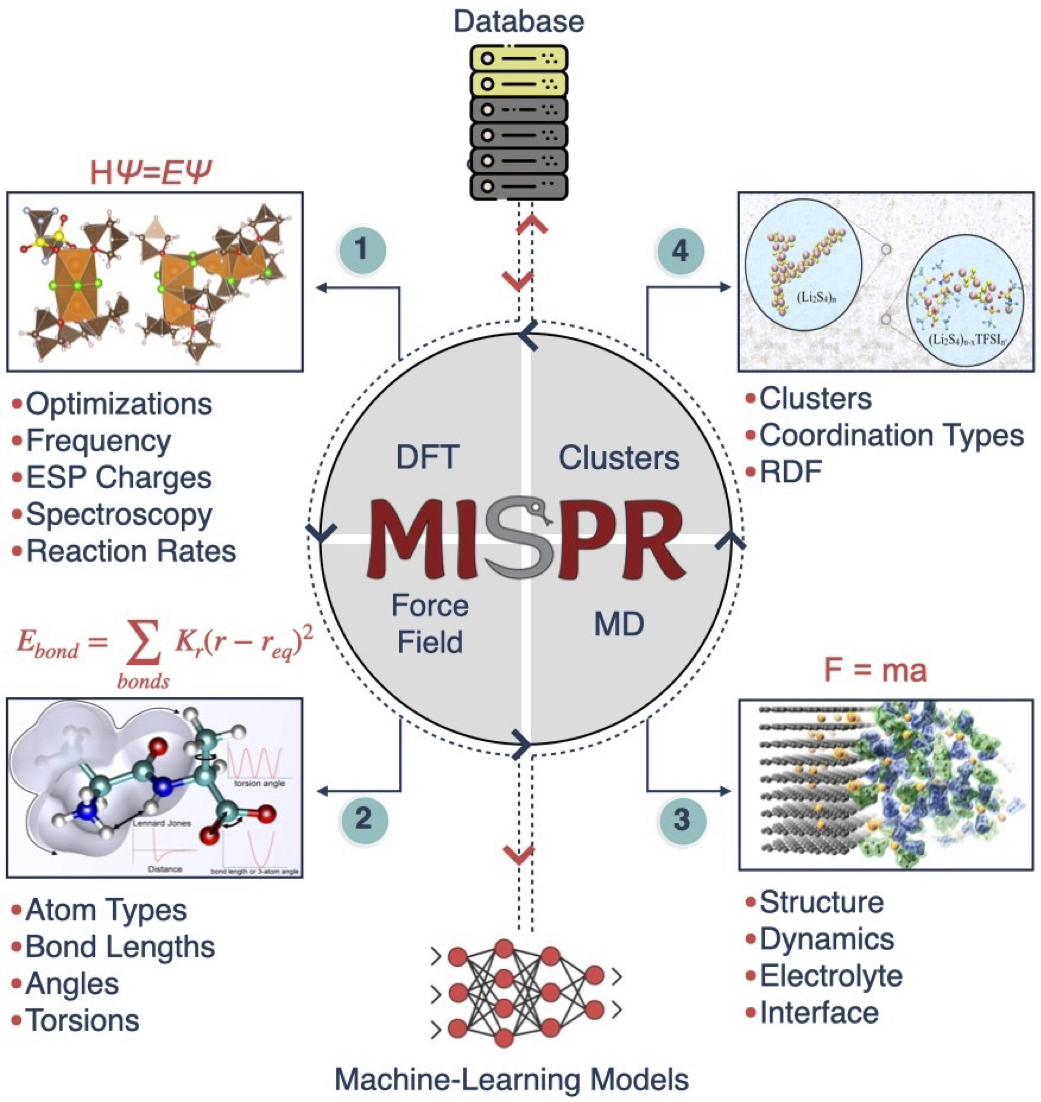A major breakthrough in battery materials is required to meet the ever-increasing proliferation of portable electronic devices, electric vehicles and their variants, as well as the need for incorporating renewable energy resources into the main energy supply.
1 In this context, lithium-sulfur (Li-S) batteries attract attention owing to their very high energy density (2,600 Wh kg-1) and specific capacity (1,675 mAh g-1) and significantly lower weight and cost, compared to lithium-ion batteries (LIBs).
2 Fully packaged, it is expected that future Li-S batteries can operate at close to 500 Wh kg-1, which is more than twice the energy density of LIBs (200 Wh kg-1). The problem of realizing the expected high energy density is defined by several issues including the dissolution of Li-Polysulfide (PS) species into the electrolyte, insulating properties of sulfur and Li-PS species, and volume change at the cathode.
3 Overcoming these challenges requires a fundamental understanding of the interplay between events occurring over wide spatial and temporal scales, and accurate prediction of electrode and electrolyte properties to obtain design metrics for new improved materials.
In this talk, I will first discuss the details of a high-throughput multi-scale computational infrastructure developed by our group called MISPR (Materials Informatics for Structure-Property-Relationship).4-6 MISPR seamlessly integrates density functional theory (DFT) calculations with classical molecular dynamics (MD) simulations and generates high-fidelity databases of computational properties and includes several fully automated workflows to compute electronic, thermodynamic, structural, and dynamical properties of electrolyte solutions.
I will then discuss the usage of MISPR to design optimal electrolytes for Li-S batteries by altering the atomistic interactions between the electrolyte components through high-throughput screening of potential co-solvent molecules. This approach guides and accelerates our rational selection of co-solvents that enable optimal compromise between the solubility of PS species and the transport properties of the electrolyte through automated DFT calculations. We use the selected candidates in detailed MD studies to comprehend the relationship between the structure of the co-solvent and the electrolyte properties. The approach allows for creating a database of well-characterized materials to be used in machine learning-based methods as well as for testing computationally identified structures in experiments. We recently published the first publicly available database, ComBat (Computational Database for Li-S Batteries), which includes ~2000 properties for solvents spanning 16 different chemical classes. This work provides crucial information to alleviate the dissolution of PS species during cycling while maintaining high ionic conductivity and low viscosity.7, 8
References:
- Larcher, D.; Tarascon, J.-M., Towards greener and more sustainable batteries for electrical energy storage. Nature chemistry 2015, 7 (1), 19-29.
- Manthiram, A.; Yu, X.; Wang, S., Lithium battery chemistries enabled by solid-state electrolytes. Nature Reviews Materials 2017, 2 (4), 1-16.
- Manthiram, A.; Fu, Y.; Su, Y.-S., Challenges and prospects of lithiumâsulfur batteries. Acc. Chem. Res. 2012, 46 (5), 1125-1134.
- Atwi, R.; Bliss, M.; Makeev, M.; Rajput, N. N., MISPR: an open-source package for high-throughput multiscale molecular simulations. Scientific Reports 2022, 12 (1), 15760.
- https://github.com/molmd/mispr.
- Atwi, R.; Chen, Y.; Han, K. S.; Mueller, K. T.; Murugesan, V.; Rajput, N. N., An automated framework for high-throughput predictions of NMR chemical shifts within liquid solutions. Nature Computational Science 2022, 2 (2), 112-122.
- Atwi, R. a. R., Nav Nidhi, Guiding Maps of Solvents for Lithium-Sulfur Batteries via a Computational Data-Driven Approach. Patterns http://dx.doi.org/10.2139/ssrn.4324048 2023.
- https://github.com/rashatwi/combat.

